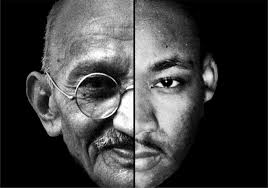BUILDING BETTER LEADERS
3 strategies to seriously up your game
If like me, you are humbled by your responsibility to help the leaders in your organization succeed, then I am speaking to you. Below are three strategies, born of 40 years in the field, that will more tightly—and efficiently–tether your efforts to business results. But be warned: you may have to kick a few sacred cows, and it’s hard work. May the force be with you.
STRATEGY #1: FIND THE RIGHT STUFF
 Leadership talent is as valuable—and rare—as pure spring water. 90% of your leadership pipeline however, may be plagued with contaminants. Were you surprised by Gallup’s far-reaching study that only 1 in 10 possess the raw talent to manage? Their stats are unlikely to inspire confidence in your leadership ROI.
Leadership talent is as valuable—and rare—as pure spring water. 90% of your leadership pipeline however, may be plagued with contaminants. Were you surprised by Gallup’s far-reaching study that only 1 in 10 possess the raw talent to manage? Their stats are unlikely to inspire confidence in your leadership ROI.
How did this contamination happen? Let’s start with a perpetual shortage of leadership talent—impelling executives to beef up their pipeline, and run volume over quality. Moreover, provider firms and their clients collude in the seductive promise of ubiquitous leadership potential. Why not cast a wide net, or have one more motivational tool at our disposal? Become a leader. Get a promotion. Live the good life. So the leadership pipeline gets clogged with legions of achievers who, like some of their bosses, give little thought to what leadership actually entails, and whether they have the interest or aptitude to pursue it. And we providers eagerly oblige, engaging many who gain little, except time away from what they see as their “real” job.
If your goal is to efficiently deliver more business value from your leadership development effort, de-contaminating your pipeline is job one. How? Get real about “high potential leaders”. Don’t assume that otherwise talented professionals qualify. Gallup tells us an additional 2 in 10 have some raw management talent, and with the right drive and support, can become effective leaders. So let’s focus on the right 3 out of 10, and speed them along the noble path of shaping their firm’s reason for being, delighting customers, building enterprise value, and creating workplaces fit for human habitation.
Thoughts on executing this strategy:
STOP hiring people leaders based primarily on technical degrees, publications and industry knowledge. You may need such knowledge, and their reputation, but not in a role leading others. In our work, we see too many highly-credentialed leaders creating highly toxic workplaces. Worried that less-technical leaders won’t command the respect of their technical staff? Talented leaders will assimilate subject matter detail faster than you think, and they’ll wield it even faster. How? They listen, trust, and win over their experts, who teach what’s needed, step up their own influence, and learn to cut their less-technical boss some slack.
STOP hawking leadership as the only path to success. Distinguish thought leadership from people leadership. Create career paths for technical and functional talent that will keep them around and engaged, but away from leading people.
START pressing your high potentials for genuine interest, understanding of, and commitment to leadership. They’ll need guidance in re-defining career success and satisfaction. Support their journey toward—or away from—leading people.
START leadership readiness programs to further thin out the ranks. Continue to assess candidates’ drive and natural ability to lead, and watch closely what they do with it.
START creating a feedback-rich environment for those with leadership potential. Require this data to be included in development discussions. Aggregate the data over time, and use it to help determine the right 3 out of 10.
STRATEGY #2: DITCH SCHOOL, MIND YOUR BUSINESS
Too often, the value of leadership development is as limited as the traditional educational mindset on which it is built. Content-heavy delivery with leadership theories and powerpoint models, delivered by an “expert”, is ineffective. Even traditional educators know this, but education changes at the speed of a glacier, and the expert-driven, mass-production model of knowledge transfer lingers. The most powerful methods for building leadership capacity live in a different world than education. They live in each leader’s personal context—a rich mixture of unique internal and external dynamics.
 With the right leaders and clear motivation to lead, our job becomes clear: to meet them where they are, and provide the conditions and a learning approach to rapidly increase their capacity. Decades of neuro-scientific research has demonstrated that learning and development is dramatically accelerated by:
With the right leaders and clear motivation to lead, our job becomes clear: to meet them where they are, and provide the conditions and a learning approach to rapidly increase their capacity. Decades of neuro-scientific research has demonstrated that learning and development is dramatically accelerated by:
- Engaging the full learning cycle: experience, reflection, new understanding, and active testing.
- Tapping the immense power of social engagement and interaction.
- Harnessing and balancing emotion with cognitive assimilation.
- Putting the management of attention at the forefront.
- Engaging multiple senses, with special focus on visual communication.
These insights are well-known. Yet too much of our industry still runs on slickly-packaged intellectual property, which is designed more to enrich providers than facilitate growth in leaders. These expensive “frameworks”, communication “techniques”, generic competencies, and sexy 4-quadrant models, helpful as they are, must not drive learning design. And trainers (including top dollar experts) must not succumb to becoming “solutions looking for problems”. Content or solution-led approaches offer insufficient help with the drive and focus required of leaders to (a) understand their own rich internal and external landscapes, and (b) expand their range of responses to overcome barriers and execute.
 Since leadership is ultimately in service of moving the business agenda forward, let’s keep it there. A leader working toward aggressive business goals provides an array of unique challenges to which new behavioral responses can be applied. Staying grounded in these challenges helps them sharpen their focus and apply precious attention to the issues that matter most. There is no better platform for growth in leadership capacity than the hunt for “better”, and the cauldron of day to day execution. Put everything in service of it.
Since leadership is ultimately in service of moving the business agenda forward, let’s keep it there. A leader working toward aggressive business goals provides an array of unique challenges to which new behavioral responses can be applied. Staying grounded in these challenges helps them sharpen their focus and apply precious attention to the issues that matter most. There is no better platform for growth in leadership capacity than the hunt for “better”, and the cauldron of day to day execution. Put everything in service of it.
If a solution and expert-driven approach can be expensive and inefficient, from whence do the insights come? In a cloud-based, mobile world: Everywhere. The best stuff is free on podcasts, YouTube, TED, or embedded in an iPhone app. Available from their purses and pockets, these new tools provide unlimited access as well as “just in time” assimilation—essential if you’re serious about facilitating individual change.
What about specific industry insights, navigating your company’s maze of relationships, or the tricky dynamics of your leaders’ own teams? Your best resources are customers, your CEO, industry and company executives, and especially the leaders’ colleagues sitting across the table. Trouble is, these stakeholders rarely see themselves in such a role. It takes a forced mindset shift, but tapping this vein unlocks enormous value. Peers love to help each other grow, but in the daily whirlwind of execution, they’re rarely expected or guided to do so. This kind of support is what productive leadership development meetings are all about.
Thoughts on executing this strategy:
STOP designing sessions around one-size-fits-all skills for diverse groups of leaders. And stop doing skill-based needs analyses. Asking leaders to identify skill needs can yield misleading data. Even 360 “development needs” must be evaluated in the context of other inputs, such as business goals, stakeholders, specific challenges, and self-awareness insights.
STOP having your executives present detailed, data-heavy business updates at leadership summits and meetings.
STOP paying top dollar for leadership authors to speak, unless the inspirational payoff is extraordinary. If you’re engaging “star-power” for their ideas, they can be accessed in more efficient and useful ways. Keep your resources focused on hitting your leaders where their rubber meets their road.
STOP using words like “class” “teaching”, “student”, “enrollment”, “curriculum” and dozens of other terms that reinforce an academic, expert and content-driven approach to developing leaders. Even your “Acme University” may not be helping.
START asking leaders to articulate business goals, including leadership challenges or barriers impeding progress. Have the leaders bring those plans and goals, share them, and tap every available resource to move things ahead.
START designing and orchestrating experiences that evoke emotions to optimize learning, and enable practical actions to advance each leader’s business agenda. Use the world of freely-available resources to stimulate thinking, and stage the right conversations with the right people to nail down specific actions. Orchestrating the right experiences is not easy, but real behavior change is always worth it. The result: much more business value for less.
START creating clear expectations for peer coaching. Redefine success to include value provided to peers, and reward it.
STRATEGY #3: FIND A MIRROR, HIT THE GYM
 Ever notice how most of the problems in our life are “out there”? It’s a safe bet your leaders see them that way too. The heavy lifting of leadership development builds a leader’s capacity to see the part they play in their challenges. Reminding them of this does little. Mirrors do more. The reflection helps us see where to focus, including how we sabotage our own efforts to improve.
Ever notice how most of the problems in our life are “out there”? It’s a safe bet your leaders see them that way too. The heavy lifting of leadership development builds a leader’s capacity to see the part they play in their challenges. Reminding them of this does little. Mirrors do more. The reflection helps us see where to focus, including how we sabotage our own efforts to improve.
Mirrors begin with keeping the feedback rolling. 360s are fine, but the more verbal, informal, and in-the-moment, the better. Mirrors also work via personality profiles, not because they represent the “truth”, but because digesting them keeps the mirror in view. And when synched with the feedback, insights happen. Add in timely coaching to link insights to moments of decision or action, and a roadmap emerges.
In our work, roadmaps come bundled with two kinds of commitments. The first are actions, such as new meetings or conversations, clarifying roles, or launching an initiative. Value is added when leaders choose, and follow through, on actions with the highest return on the time and attention invested. The second kind of commitment relates to personal behavioral “style”, or approach to these actions. Examples are interrupting less, managing an irritated tone, or confronting respectfully. Strengthening these behavioral habits acts as a multiplier, increasing the effectiveness of many other actions.
With both kinds of commitments, the “knowing-doing” gap looms large, but especially with efforts to change leadership “style”. One path to bridging this gap is understanding and shifting mindsets. This means developing a clear vision of the new, and learning to control the thoughts that do not serve. It also means an understanding of the internal barriers or conflicting beliefs preventing action, and removing them. With reflection, the leader builds capability in sorting out the complexities of their challenges, and moves more quickly to action.
A second path requires the disciplined, systematic approach that strengthens habits–such as asking questions instead of directing or defending. Progress takes repeated practice, feedback and support–more like hitting the gym than hitting the classroom. Here, even with motivated leaders, the energy and focus required to follow through begs for additional support.
 Consider the insane popularity of CrossFit. What’s fueling this? There’s more pain, more injuries, “old fashioned” equipment, and it costs more than other ways to get fit. But the CrossFit rocket has three powerful engines: counting, coaching and community (the music also helps). Engaged coaching and feedback bring rapid improvement in technique, weight, reps, and time—carefully tracked and visible to all. Results and leaderboards are posted everywhere. And the hard work takes place in intensely-engaged peer groups, turning participants into buff, sweaty, fist-bumping zealots.
Consider the insane popularity of CrossFit. What’s fueling this? There’s more pain, more injuries, “old fashioned” equipment, and it costs more than other ways to get fit. But the CrossFit rocket has three powerful engines: counting, coaching and community (the music also helps). Engaged coaching and feedback bring rapid improvement in technique, weight, reps, and time—carefully tracked and visible to all. Results and leaderboards are posted everywhere. And the hard work takes place in intensely-engaged peer groups, turning participants into buff, sweaty, fist-bumping zealots.
As you orchestrate experiences for your leaders, think CrossFit. Just lose the spandex.
Thoughts on executing this strategy:
STOP entertaining “out there” problem-solving or finger-pointing at the top. Change always starts with us.
STOP demanding hand-written action or development plans on a sheet of paper that gets filed and forgotten.
START asking leaders to publicly articulate their top development priority with crystal clarity, hold it sacred, and use their daily interactions to sharpen it. Challenge them to make feedback a “pull” vs. “push” system by asking for it often, and reinforcing every effort.
START having them track progress visually using milestones against their leadership challenges. Encourage the use of smartphone “habit” apps for difficult-to-track behaviors. Ensure that commitments are logged with the same electronic tools—and reminders–used for other essential business priorities.
START engaging more coaches, including and especially the leaders’ most respected peers. See that coaching stays focused on identifying internal and external barriers, and brings intense curiosity about action and change. Include follow up meetings, where progress is shared using visual tools. When deep enough connections are made, they will do all of this on their own. Expect the highest level of peer accountability.
START growing connected communities of leaders, with a mission to accelerate business results, drive a more purposeful culture, and increase enterprise leadership capacity.
In my experience, the road to building better leaders can be steep and rocky, requiring hard and skillful peddling. But the result is an uncommonly successful enterprise. Work the three strategies, and I’m betting you’ll find a whole new gear.
by
Douglas R. Brockbank
Founder, Leadership Frontiers